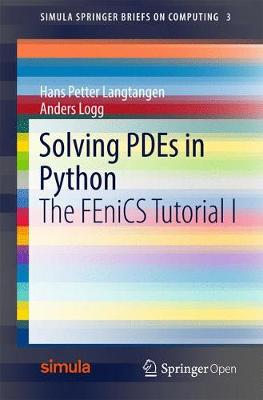Simula SpringerBriefs on Computing
2 primary works
Book 2
Scaling of Differential Equations
by Hans Petter Langtangen and Geir K. Pedersen
The book serves both as a reference for various scaled models with corresponding dimensionless numbers, and as a resource for learning the art of scaling. A special feature of the book is the emphasis on how to create software for scaled models, based on existing software for unscaled models.
Scaling (or non-dimensionalization) is a
mathematical technique that greatly simplifies the setting of input parameters in
numerical simulations. Moreover, scaling enhances the understanding of how
different physical processes interact in a differential equation model.
Compared to the existing literature, where the topic of scaling is frequently
encountered, but very often in only a brief and shallow setting, the present
book gives much more thorough explanations of how to reason about finding the
right scales. This process is highly problem dependent, and therefore the book
features a lot of worked examples, from very simple ODEs to systems of PDEs,
especially from fluid mechanics.
The text is easily accessible and example-driven. The first part on ODEs fits even a lower undergraduate level, while the most advanced multiphysics fluid mechanics examples target the graduate level. The scientific literature is full of scaled models, but in most of the cases, the scales are just stated without thorough mathematical reasoning. This book explains how the scales are found mathematically.
This book will be a valuable read for anyone doing numerical simulations based on ordinary or partial differential equations.
Book 3
This book offers a concise and gentle introduction to finite element programming in Python based on the popular FEniCS software library. Using a series of examples, including the Poisson equation, the equations of linear elasticity, the incompressible Navier-Stokes equations, and systems of nonlinear advection-diffusion-reaction equations, it guides readers through the essential steps to quickly solving a PDE in FEniCS, such as how to define a finite variational problem, how to set boundary conditions, how to solve linear and nonlinear systems, and how to visualize solutions and structure finite element Python programs.
This book is open access under a CC BY license.

